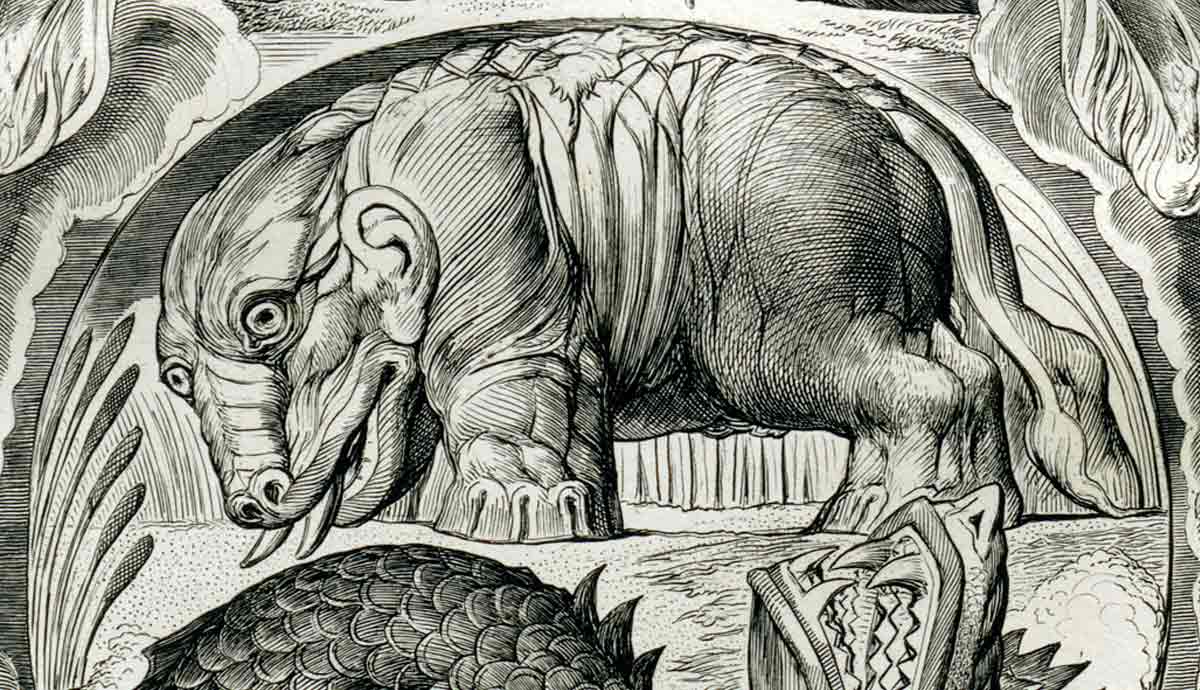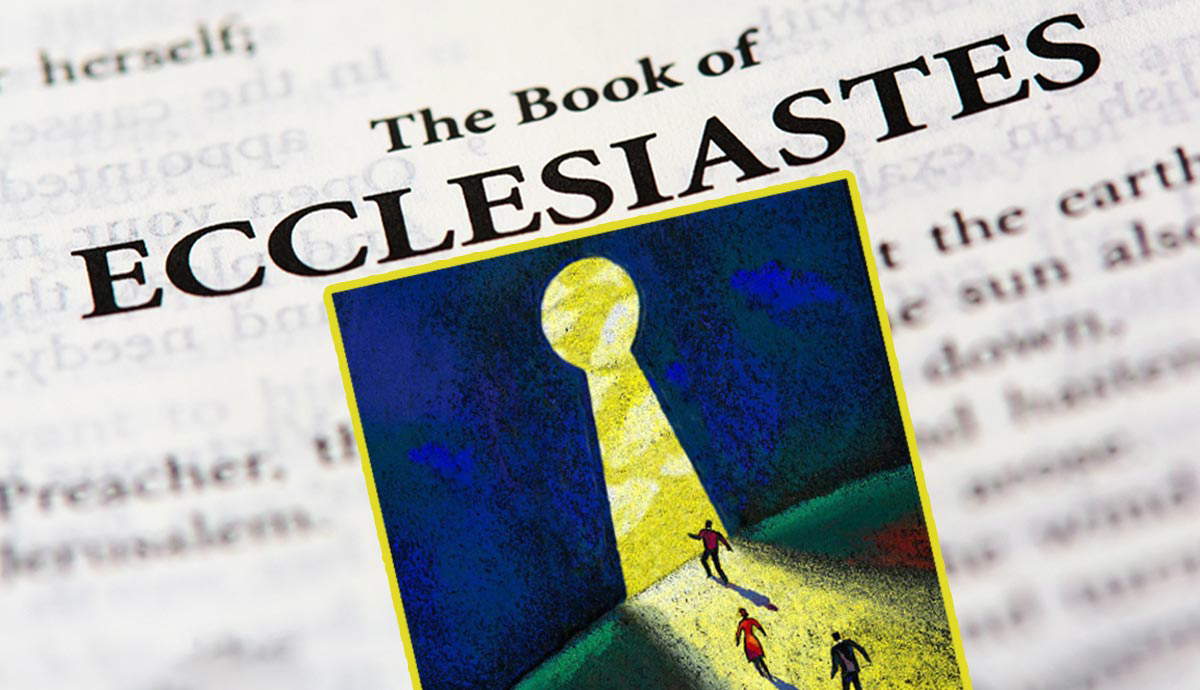
The Bible mentions a group of 144,000 people twice: once in Revelation 7 and once in Revelation 14. According to Revelation 7, this group consists of 12,000 persons from each of the twelve tribes of Israel. The narrative mentions each of the twelve tribes by name and specifies that 12,000 of them are part of the 144,000. Revelation 7 also refers to a great multitude. This group is too large to be counted. The finite number 144,000, in contrast to the innumerable multitude, makes them seem mutually exclusive. At first glance, it seems clear that these two groups are not the same. However, some interpreters believe that they are the same. How do they reconcile the contradictions? The identity of the groups may provide an answer. Let’s investigate…
Revelation 7

Scholars divide Revelation 7 into two parts. In the first part, four angels hold back the four winds from blowing on the earth. Another angel appears and instructs the four angels to hold back the winds until the servants of God have been sealed. These servants are 144,000 in number. Verses 5 to 8 each list three tribes of Israel, and state that 12,000 from the mentioned tribe are part of the 144,000.
The second part of Revelation 7 deals with the great multitude. This group is too large to be counted and consists of every nation, tribe, people, and language. They stand before the throne of God and before the Lamb dressed in white garments. This group joins the elders, the angels, and the four living creatures in worshiping God. One of the elders asks John if he knows who the great multitude are. He replies: “Sir, you know.”
The elder explains that the great multitude includes those who have endured the great tribulation. They now serve before God’s throne, because they have cleansed their robes with the blood of the Lamb. They will never hunger or thirst anymore and will receive God’s protection and the Lamb’s guidance.
The 144,000

The Bible mentions the 144,000 only once, other than in Revelation 7. We find the 144,000 in the Lamb’s presence in Revelation 14. Here this group has the name of the Lamb and the name of the Father written on their foreheads. They sing a song only the 144,000 could learn as they stand before the elders and the four living creatures. The members of this group are pure. They have been redeemed from the earth, and the narrative presents them as blameless.
Progression Differences Between the 144,000 and the Great Multitude

There are glaring differences between the 144,000 and the great multitude. One is a finite number, the other is innumerable. One consists exclusively of tribe members from Israel; the other consists of people from all nations, cultures, and races. One is on earth, about to be sealed before facing great peril; the other is in heaven before God and the Lamb.
The 144,000, however, are later seen in the presence of the Lamb as well. The names of the Lamb and the Father appear on their foreheads, most likely the seal they were about to receive in Revelation 7. They now sing a song only they could learn, likely pointing to their experience when the four winds, which serve as a metaphor for war and persecution, were unleashed after their sealing.
Seeing and Hearing

John uses a literary technique in the Book of Revelation that may affect how we see the 144,000 and the great multitude. On several occasions, John refers to hearing something and then seeing what he heard. What he hears about and what he sees are the same thing.
In Revelation 1:10-13, John hears a voice speak to him about the lampstands. He then turns and sees the speaker among the lampstands. In Revelation 5, John hears about the Lion of Judah (Christ), then turns and sees the Lamb (Christ). Though very different images, it is essentially the same entity he hears about and then sees. In Revelation 17 John hears about a prostitute sitting on many waters. He then turns to see a woman sitting on a scarlet beast. Again, what he hears about and afterward sees is the same, though depicted differently.
John heard about the 144,000 and the twelve sets of 12,000 that constitute that number. He then sees the great multitude. Considering this literary device, the 144,000 that John hears about, and the great multitude John sees could be the same group. This would only be true if the 144,000 is a symbolic number and if the tribes of Israel could somehow represent people from other nations.

The number twelve is significant in the Bible. It is strongly associated with the tribes of Israel. The number 144,000 is the sum of twelve times twelve, which is 144, multiplied by one thousand, which was the size of a military unit. The number, therefore, represents an army consisting of God’s people.
Since the twelve tribes were no longer readily identifiable when John wrote, the likelihood of this being a reference to the literal tribes is small. The names of the tribes in Revelation 7 also do not align with any Old Testament list of the twelve tribes. In the greater context of symbolism in the Book of Revelation, a symbolic interpretation of the reference to the tribes becomes more palatable.
Revelation 6 and 15

The references to the 144,000 and the great multitude do not appear in a vacuum. In the last verse of Revelation 6, those experiencing God’s wrath ask: “Who can stand?” The second part of Revelation 7 answers the question. After presenting the 144,000 who are about to enter a time of strife on earth, the great multitude comes into view. They are in heaven after their victory and stand before the throne of God and before the Lamb.
The 144,000 and the great multitude seem to be the same group seen from two perspectives. The 144,000 in Revelation are the saints going into the great tribulation. The great multitude is the same group after their victory. The 144,000 represents the church militant on earth, while the great multitude represents the church victorious in heaven.
Revelation 15 may hold another clue to resolving the issue at hand. It follows directly after chapter 14, which mentions the 144,000 a second time and states that they sang a song no one could learn but them. It is a song about the experience of going through great tribulation. In chapter 15, we encounter a group that was victorious in their encounter with the beast. They sing the song of Moses and the Lamb. This recalls the song the Israelites sang after God divided the Red Sea and saved them from the Egyptian armies (See Exodus 14 and 15a). Both are songs of victory honoring God.
Similarities Between the 144,000 and the Great Multitude

The 144,000 and the great multitude share several traits. Both went through difficult times. Both came out victorious. Both stand before God’s throne. Both are victorious. The Bible describes the 144 000 as servants of God (Revelation 7:3) while the great multitude serves God (Revelation 7:15). Revelation 7, then, provides a picture of the same group just before and shortly after the great tribulation.
Conclusion

Reading about the 144,000 and the great multitude for the first time, it may seem like two mutually exclusive groups. One is a finite number from the tribes of Israel, while the other is an innumerable multitude from all nations.
Considering the context of Revelation 7 and 14, however, it becomes clear that the symbolic nature of the Book of Revelation and the literary devices that John employed when writing point to a single group seen from two perspectives. The 144,000 represent a military unit about to enter the great tribulation once the angel has sealed them. They appear in Revelation 14 again with the seal of God and the Lamb on their foreheads. They sing a song of experience, just like the Israelites did under Moses after their Red Sea experience.
The attributes of the 144,000 and the great multitude overlap in many aspects and seem to indicate that the 144,000 represent the church militant, while the great multitude represents the church victorious before and after the great tribulation.










